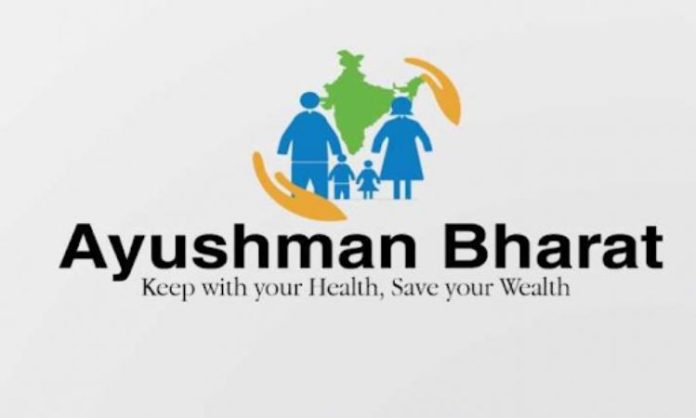Under the Ayushman Bharat Health Insurance Scheme, a landmark initiative by the Indian government, more than 300 million cards have been generated through the efforts of the National Health Authority (NHA), marking a significant milestone in public health services. This initiative, widely known for its scale and scope, aims to provide affordable health insurance to the underserved and economically disadvantaged sections of the society. This article examines the role of the Beneficiary NHA in the execution of this scheme and how it has transformed healthcare accessibility in India.
Introduction to Ayushman Bharat Health Insurance Scheme
Launched in 2018, the Ayushman Bharat Health Insurance Scheme, also known as Pradhan Mantri Jan Arogya Yojana (PMJAY), is designed to cover the poorest 40% of the Indian population, offering a cover of up to 5 lakh rupees per family per year for secondary and tertiary care hospitalization without any cap on family size and age. The role of the Beneficiary NHA has been pivotal in operationalizing this scheme, which has not only improved the health outcomes but also has shielded the vulnerable populations from the financial hardships associated with healthcare expenses.
The Role of Beneficiary NHA
The Beneficiary NHA, functioning under the Ministry of Health and Family Welfare, serves as the backbone of the Ayushman Bharat scheme. It oversees the implementation, management, and upgrading of the scheme across the country. The authority is also responsible for the enrollment of beneficiaries, issuance of Ayushman Bharat cards, and ensuring that the hospitals are reimbursed for the healthcare services provided to the insured individuals.
1. Technology Integration
One of the significant achievements of the Beneficiary NHA has been the integration of sophisticated technology to manage and streamline the processes involved in the health insurance scheme. The use of technology has enabled the automation of several critical operations, including the generation of more than 300 million health insurance cards, which ensures that healthcare services are delivered efficiently and transparently.
2. Awareness and Outreach Programs
The Beneficiary NHA has also launched numerous awareness and outreach programs to educate the masses about the benefits of the scheme. These programs are crucial in ensuring that the target population, especially in rural and remote areas, is aware of and can access the health insurance benefits. This proactive approach has significantly increased the enrollment rates and the utilization of insurance benefits.
3. Monitoring and Evaluation
Continuous monitoring and evaluation mechanisms put in place by the Beneficiary NHA have ensured the quality and effectiveness of the health insurance scheme. Through regular audits and feedback loops, the authority has been able to address any challenges promptly and enhance the service delivery model, leading to better health outcomes and increased beneficiary satisfaction.
Impact on Public Health
The direct impact of the Ayushman Bharat Health Insurance Scheme on India’s public health landscape has been profound:
- Reduction in Healthcare Costs: The financial barrier to accessing quality healthcare has been substantially reduced. Families that were previously unable to afford medical treatment can now receive necessary care without the fear of financial ruin, thanks to the health insurance provided under the scheme.
- Improved Health Outcomes: With more people able to access timely medical interventions, there has been a noticeable improvement in health outcomes. Diseases are being treated earlier, and the overall burden of untreated health conditions has decreased across the covered population.
- Strengthened Healthcare Infrastructure: The influx of insured patients has provided hospitals with the financial stability to upgrade their facilities and services, leading to an overall strengthening of the healthcare infrastructure, particularly in underdeveloped areas.
Challenges and Future Directions
Despite the successes, there are challenges that the Beneficiary NHA continues to tackle:
- Inclusion of Non-Covered Populations: There are still segments of the population that are either unaware of or unable to access the benefits. Expanding the reach of the scheme to include these groups remains a priority.
- Healthcare Provider Fraud: Ensuring that the health insurance claims are legitimate and that healthcare providers do not exploit the system is an ongoing challenge that requires robust oversight and stricter controls.
- Enhanced Coverage: There is a growing need to expand the list of procedures covered under the scheme to include more diseases and advanced treatments, which would further alleviate the burden on the poor.
Conclusion
The role of the Beneficiary NHA in the successful implementation of the Ayushman Bharat Health Insurance Scheme has been crucial. More than 300 million health insurance cards have been generated, providing unprecedented access to healthcare services for India’s underserved populations. As the scheme continues to evolve, the focus remains on improving the reach, efficiency, and scope of the health insurance coverage, ensuring that more citizens can enjoy the benefits of a well-rounded healthcare system. This initiative not only enhances the health security of individuals but also contributes to the socio-economic development of the nation.


